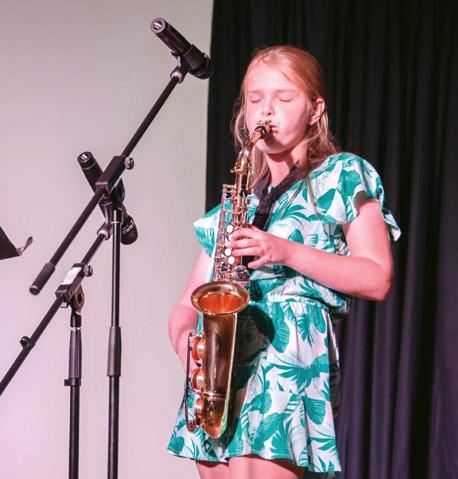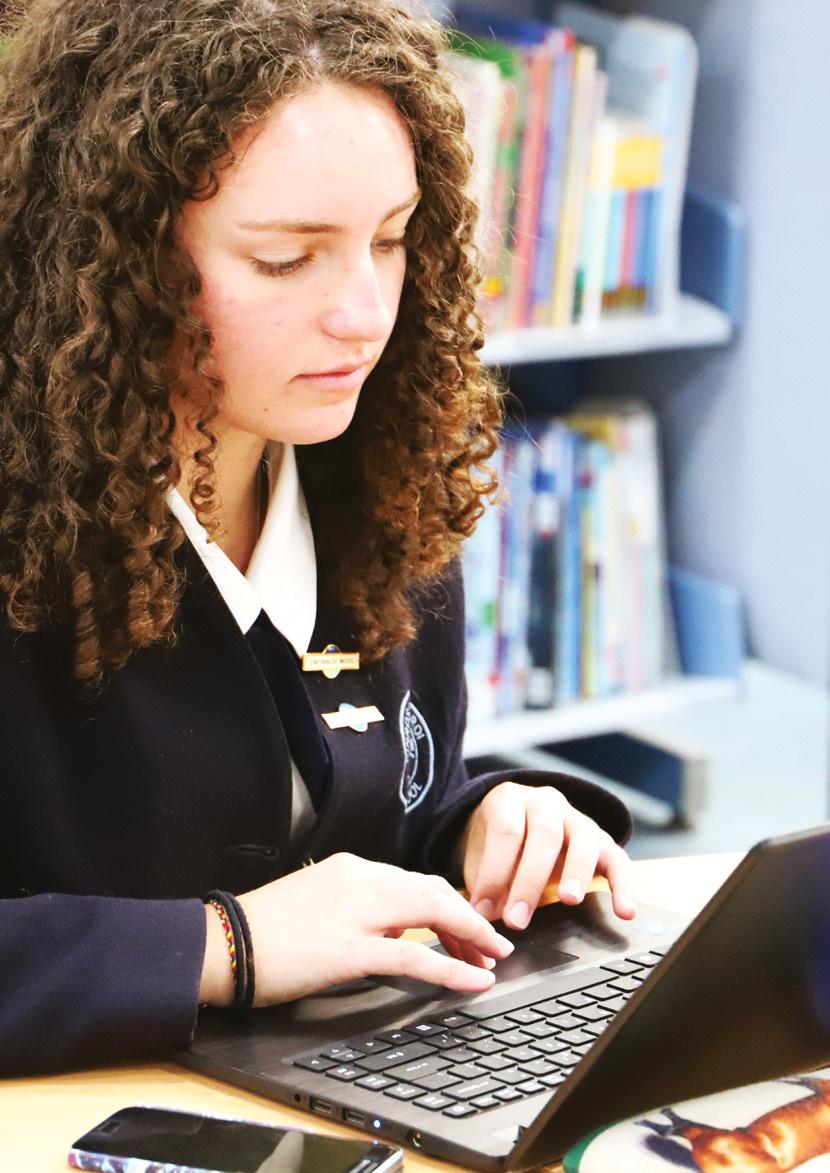
3 minute read
Can you hear me now?
Junior School students learn the art of sign language.
Mrs Katie Sinclair, Junior School Performing Arts Coordinator
When Katie Sinclair introduced the Junior School Choirs to Auslan (Australian Sign Language) while singing was restricted during the pandemic, she had no idea how quickly the students would learn new phrases and words or enjoy the experience.
Once a week during Term 3, Kinross Wolaroi School’s Junior School Performing Arts Coordinator would organise for the choirs to take part in an online lesson with Megan Price, an audiologist who has studied Auslan and British Sign Language and is the mother of KWS students Finn (Year 6), Harry (Year 3) and Darcy (Pre-Kindergarten).
Learning how to sign English songs in Auslan was one thing, but the students came alive with excitement when they were given the opportunity to record a song in Auslan for School families to see.
Katie said the children were fascinated to learn the different signs and understand the importance of facial expression to communicate clearly with the hearing impaired.
“It was exciting and rewarding to see how much the students remembered week-by-week,” she said. “The performance of the Australian classic, Waltzing Matilda, by our Year 1-2 Choir towards the end of the term was a delight to watch as the students were clearly enjoying sharing their newfound skills.” Year 1 student Zali, Year 2 student Leo and Year 4 student Harry said they were excited to learn something completely new and how to talk to people in a different language.
Here’s what some of the other students had to say.
“I liked being able to learn sign language so I could communicate with people who are hard of hearing. I had never done anything like this before and it was very enjoyable,” Year 3 student Isabelle said.
“I think Auslan is important to learn because some people don’t realise that it is a language used by a lot of people. I knew a few signs before I did Auslan with the choir, but I would like to do more of it so I can learn more words and phrases,” Year 4 student Natalie said.
Katie says she is always looking for ways to broaden the choir’s repertoire by including songs in different languages and is now more aware of including songs in Auslan.
“Like any other language, Auslan has an important place in our culture, which we must respect and raise awareness of in our School community,” she said.
The Junior School Performing Arts program has three choirs (Year 1-2 Choir, Year 3-4 Choir and Year 5-6 Choir) that rehearse once a week. The students also learn to read music, improvisation and ensemble skills, while exploring a rich and diverse variety of musical repertoire from Australia and around the world.
It was important to Katie that the students continued to develop a sense of creativity and their skills even when the pandemic disrupted usual choir practice. “I realised this could be an opportunity for our students to acquire new skills and experience something they may not normally have access to,” she said. “Our students used Auslan signs to sign English songs. This was done to foster a love of using sign language and make learning the songs a little easier. It was fascinating for students to see how some of the signs were formed and used in the context of sentence structure.”
Audiologist and sign language enthusiast Megan Price was able to provide invaluable guidance and assistance throughout the experience. The choir would dial in for lessons each week and if Megan was unavailable, she would video the tutorials to help the students consolidate the signing they had learnt the week before.
Interestingly, the Internet, telephone and SMS texting wouldn’t exist without the Deaf community. Alexander Bell invented the telephone in the 1870s after studying acoustics to help his mother who had progressive deafness. Vinton Cerf was central to creating the Internet and his hearing impairment meant he needed to share documents with associates instead of talking on the phone. Then came SMS texting, invented by Matti Makkonen in 1992 for Deaf people to communicate •










